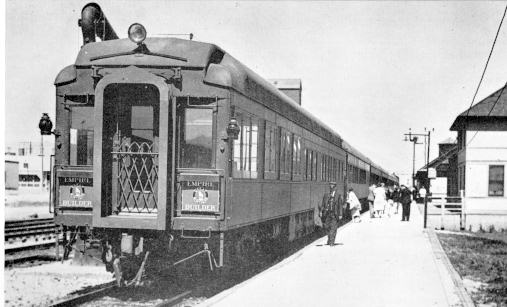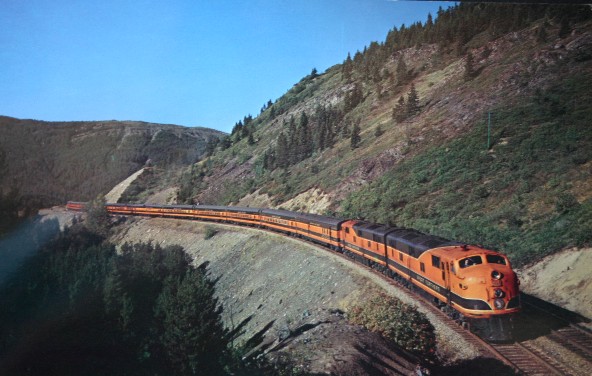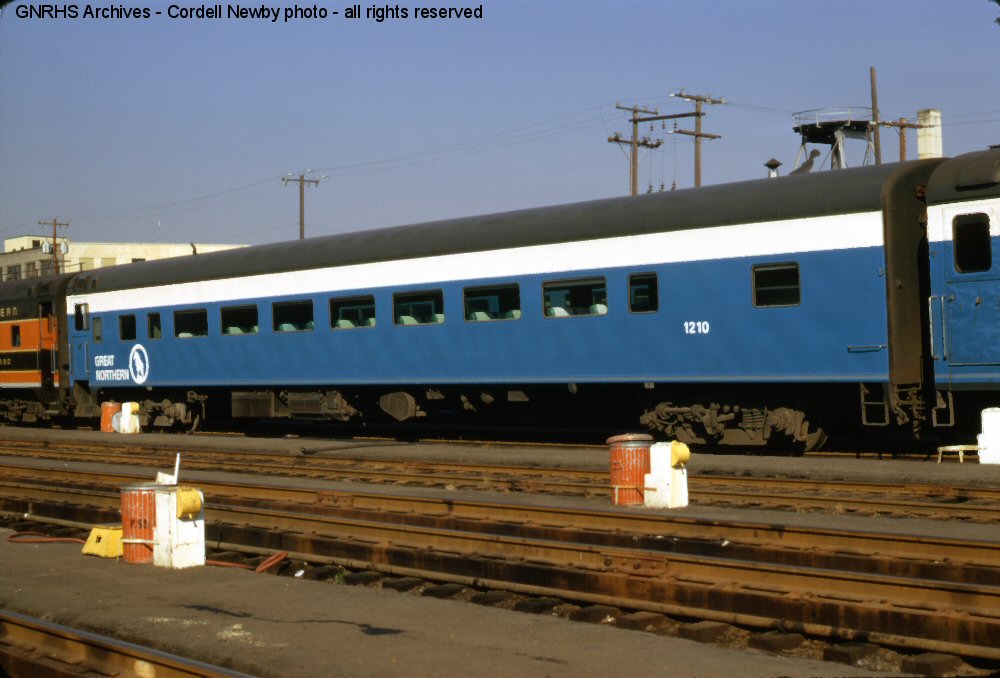On Tuesday, we talked about
Amtrak's Empire Builder. Today, we are going to talk about how that train came to be, which takes us back to the late 1800's, long before anyone had ever thought of Amtrak. The Great Northern Railway was created by tycoon James J. Hill from the St. Paul and Pacific Railway, and several other railroads he owned at the time. The railroad was headquartered in St. Paul, and James Hill had a dream of connecting that city with the Pacific Ocean. His dream was realized on January 6, 1893, in Scenic, WA, when the countries northernmost transcontinental railroad was completed.
 |
James J. Hill, circa 1890.
Image from Wikipedia. |
James Hill became known for keeping the work on the railroad going, even against obstacles. His goal was the shortest, straightest, and flattest route possible to the Pacific Ocean. He had no interest in developing Rocky Mountain scenery, he just wanted to develop a railroad to the Pacific. He did a lot of the route planning himself, and even rode the proposed routes on horseback. If an area the railroad was expanding to did not have enough industry, Hill would buy out a company and bring the industry in, just to generate rail traffic and produce business for the line. He let nothing stop him, and he refused Federal money, and only accepted a few land grants. The Great Northern was the only transcontinental railroad built without any Federal financial support. Because of Hill's attitude and ruthless expansion, he became known as the Empire Builder. Hill died in 1916, and never saw the launch of the train named for him, the
Empire Builder.
 |
The Empire Builder Solarium observation car, idles in
Shelby, MT. Photo from www.gngoat.com. |
On June 11, 1929, the Great Northern decided to launch a new premier train, and they chose to name it the
Empire Builder, in honor of James Hill. The train displaced the
Oriental Limited as their premier train, and it operated between Chicago and Portland and Seattle, using Chicago, Burlington, and Quincy trackage between Chicago and Minneapolis. The train was a 14 car train, pulled by a 4-8-4 steam locomotive. For World War 2, the service was altered to accommodate the higher demand for the railroad. After the war, in 1947, the train was re-equipped for the first time.
 |
The 1947 Empire Builder, near Glacier
Park, MT. Photo from www.gngoat.org |
In 1947, the Great Northern gave a new look to the
Empire Builder. It was re-equipped with new, streamlined passenger cars, and the steam locomotive was replaced with a pair of shiny new diesel locomotives. This is when unveiled its famous orange and green paint scheme, which became a trademark of the Great Northern. The diesels and cars were all painted to match, and they really stood out in the new Empire Builder paint scheme. The new diesels were streamlined to match the new passenger cars. Diesel was still new. Premier trains got diesels first, and the steam locomotives kept pulling the less well known trains and the freight trains. In addition to being new power, diesels were a status symbol for the railroads.
 |
The Empire Builder, after the 1955 addition of the dome
care. Photo from www.greatnorthernempire.net. |
In 1951, the
Empire Builder was re-equipped once again. A new set of diesels was assigned to the train, and in 1955, dome cars were added to the passenger cars. The
Empire Builder boasted more seats under domes than any other train. Several coach dome cars were added, and one full length dome car was added for the First Class passengers. The train featured food service in three cars, including the dining car, the full length dome, and the coffee lounge car, better known as the Ranch car. The Ranch car featured a western themed decor, with a variety of options for dining, from light snacks to entire meals. There was bar seating, table seating, and lounge seating. The full service dining car served three meals per day, all cooked to order. In the full length dome, First Class passengers could order food and drinks while enjoying the view of the scenery under a large, glass dome. Attendants were happy to deliver food to any sleeping car accommodations or coach seats as well.
 |
Drawing of the interior if the Ranch car, taken from a Great Northern
publication entitled, "The Ranch." |
The entire train had a western theme in the artwork. Many of the cars were decorated with northwestern Indian artwork. Some, like the Ranch car, had a western, ranch theme. With the hide seats and wooden partitions, the ranch car was supposed to make passengers experience the areas of North Dakota and Montana that they were travelling through, and looking at outside the windows. The dome cars gave passengers some spectacular views as they traveled along the Mississippi River, through the Rocky Mountains, over Stevens Pass, and through the Columbia River Gorge.
 |
An Empire Builder coach in the "Big Sky Blue" paint
scheme. Photo from GN Historical Society archives. |
Train travel during this time was often viewed differently than it is today. Many people have heard the phrase, "Getting there is half the fun." Railroads went to great lengths to ensure that the trip would be as much a part of the experience as the destination. Rail travel was stylish, and celebrities rode well known trains, because they wanted to be associated with that train, and all the style and luxury that went with it. The
Empire Builder, in its day, was one of those trains.
In its later years, the Great Northern decided to change the company image a bit. Passenger trains, including the
Empire Builder, were painted in what became known as the "Big Sky Blue" paint scheme. This lasted for a few years, until the Great Northern Railway ceased to exist.
 |
A former Great Northern sleeping car, from the Empire
Builder, in the Burlington Northern "Hockey Stick" paint
scheme. Photo from www.rrpicturearchive.net. |
In 1970, just over a year before the creation of Amtrak, the Great Northern Railway merged with the Northern Pacific Railway, the Chicago Burlington & Quincy Railroad, and the Spokane, Portland, and Seattle Railway, to form the Burlington Northern Railroad. The Burlington Northern continued to run the passenger trains of all four of its predecessors for thirteen months, until Amtrak was created, on May 1, 1971, and took over most passenger operations nationwide. During the time Burlington Northern ran passenger trains, they were repainted again, to a paint scheme known as the hockey stick scheme. When Amtrak was created, on 1 May 1971, they took over all of the Burlington Northern passenger trains, including the
Empire Builder. Since Amtrak took over, new equipment has been introduced, and the route has been changed a few different times. While they still run a train known as the
Empire Builder, it has changed quite dramatically since it was the pride of the Great Northern.
 |
| Photo of the Empire Builder in Montana. Photo is from the rear cover of a Great Northern publication entitled, "Great Domes on Great Northern's Greatest Train." This booklet was published in 1955 when the GN introduced dome cars to the Empire Builder. |









No comments:
Post a Comment